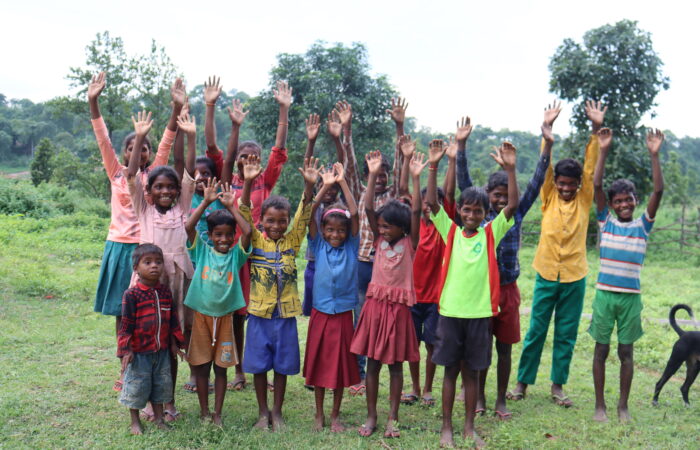The digital age has given us unprecedented access to information and communication, but it has also presented major hazards like Online Child Sexual Exploitation (OCSE). OCSE refers to any situation in which a person—usually a kid or a vulnerable adult—is pressured, manipulated, or lured into engaging in sexual behaviors online, frequently with the promise or offer of something in exchange for their involvement. This exploitation can take numerous forms, including grooming, sextortion, and cyberstalking.
The threat of OCSE develops in tandem with global internet usage. The fast growth of social networking platforms, gaming communities, and messaging apps has made it easier for attackers to discover, target, and exploit weak users. Understanding the complexities and dangers of OCSE is crucial for protecting.
Key Statistics on Online Child Sexual Exploitation
The statistics below shed light on the scope of the problem.
Global Reports: In 2023, the National Center for Missing and Exploited Children (NCMEC) received over 36 million CyberTipline reports about suspected online child sexual exploitation, a 360% increase over the previous decade. These stories include a wide range of exploitation, including grooming, sextortion, and the distribution of child sexual abuse material (CSAM). A considerable proportion of the victims are under the age of 13, with a noticeable increase in cases involving children under the age of ten, including babies. The rise is largely linked to the expansion of digital platforms, such as social media, gaming groups, and messaging applications, which have made it easier for offenders to exploit vulnerable victims.
Victim Demographics: According to studies, 80% of online sexual abuse victims are female, with the majority aged 11 to 17 years. However, boys are increasingly being targeted, especially in cases of sextortion.
Predators Age Range: Perpetrators vary in age, but research indicates that the majority of online sexual predators are adults aged 18 to 45, with some cases involving older individuals.
Social Media as a Gateway: According to the Internet Watch Foundation, social media platforms, including Instagram, account for 70% of child sexual abuse imagery.
The Psychology Behind Grooming: How Predators Exploit Vulnerabilities
The statistics below shed light on the scope of the problem.
Global Reports: The National Center for Missing and Exploited Children (NCMEC) reports that over 29 million reports of child sexual exploitation were filed globally in 2022.
Victim Demographics: According to studies, 80% of online sexual abuse victims are female, with the majority aged 11 to 17 years. However, boys are increasingly being targeted, especially in cases of sextortion.
Predators Age Range: Perpetrators vary in age, but research indicates that the majority of online sexual predators are adults aged 18 to 45, with some cases involving older individuals.
According to the Internet Watch Foundation, social media platforms account for 70% of child sexual abuse imagery, with Instagram and Snapchat identified as high-risk grooming sites. One of the most common forms of OCSE is grooming, in which perpetrators develop a trusting relationship with victims and gradually manipulate them.
The stages of grooming include targeting victims who exhibit emotional vulnerability, loneliness, or a desire for attention. Platforms like social media and online games are widely used. Online games contribute to grooming by offering offenders anonymity and opportunities to build trust with children through in-game chats and interactions.
Predators may pose as peers or sympathetic adults, demonstrating empathy and understanding to form an emotional bond. This phase can last several weeks or even months.
Exploiting the Relationship: After establishing trust, the abuser coerces the victim into disclosing personal information, explicit content, or engaging in inappropriate behaviour.
Isolation: Perpetrators may attempt to isolate the victim by discouraging them from confiding in trustworthy adults. They frequently use threats of exposure or emotional blackmail to maintain control.
Abuse and Escalation: The final stage involves sexual exploitation, which can include sexting and sending
Different Forms of Online Child Sexual Exploitation
OCSE is not a monolithic issue; it comes in a variety of forms, each requiring tailored approaches to detection and prevention.
Sextortion: In this type of exploitation, perpetrators coerce victims into sending sexually explicit images or videos, often through blackmail. For example, a predator may threaten to release explicit images to the victim’s social circle unless additional conditions are met.
Case Study: The FBI reports that sextortion cases have increased by more than 40% since 2019. A high-profile case involved a global sextortion ring that targeted over 100 victims in several countries, demanding money in exchange for not releasing compromising images.
Sharing Explicit Content Without Consent: Also known as “revenge porn,” this is the non-consensual distribution of explicit material to humiliate or harm another person.
Legal Measures: Many countries, including the United States, Canada, and the United Kingdom, have passed legislation criminalizing the distribution of non-consensual explicit content, but prosecution can be difficult, particularly if the Predator is located abroad.
Live Streaming of Abuse: A concerning trend is the live-streaming of sexual abuse, in which predators pay for real-time access to abuse taking place in various parts of the world, frequently involving child trafficking victims. The internet’s anonymity and lack of regulation on some platforms make these heinous crimes more difficult to track.
Online Child Sexual Exploitation (OCSE) is a serious and complex issue that includes numerous forms of abuse such as grooming, sextortion, and coercing vulnerable people into providing explicit content. Perpetrators frequently employ persuasion, threats, or promises of exchange to get victims—usually minors or vulnerable adults—to participate in these activities. In addition to grooming and sextortion, OCSE can include sexting, in which sexual messages or photographs are shared, which frequently leads to cyberbullying and the usage of these materials to harass or blackmail victims. As the number of online platforms, social media, and gaming communities grows, so does the possibility of such exploitation, making it critical to raise awareness and implement preventative measures to combat these threats.
Actionable Steps for Parents, Educators, and Communities to Protect Children
Prevention is essential in combating OCSE. Here are some proactive measures that parents, educators, and community members can implement:
1. Create an open dialogue: Begin conversations with children about internet safety from an early age. Teach them about privacy, the dangers of sharing personal information online, and how to recognize signs of grooming.
Tip: Use age-appropriate language and examples to help children understand the concept without causing unnecessary fear.
2.Implement Parental Controls: Several tools, including Net Nanny, Kaspersky Safe Kids, and Bark, allow parents to monitor their children’s online activity, set content filters, and limit communication with strangers.
3.Conduct regular digital check-ins: Encourage children to openly discuss their online experiences. Keep track of their social media, gaming, and messaging activities. Be aware of the signs.
4.Teach Digital Literacy: Educators can implement programs in schools that promote digital literacy, allowing students to critically assess online relationships and content.
5.Collaborate with Law Enforcement: If you suspect someone is being exploited, you should report it to authorities right away. Cybertip hotlines, including CyberTip.ca in Canada and the National Center for Missing and Exploited Children in the United States, provide 24-hour reporting mechanisms.

What to Do if You Suspect Online Sexual Exploitation
Recognizing and responding to OCSE is critical. Here’s what to do if you suspect a crime:
Report the Abuse: If you suspect online sexual abuse, contact platforms like CyberTipline.org and local law enforcement right away.
Preserve evidence: Keep all correspondence, including screenshots, URLs, and messages, to assist investigators.
Seek Professional Help: Contact support services such as Kids Help Phone, RAINN, or Childline to help victims recover and stay safe.
How Technology Facilitates Exploitation and Prevention
While technology enables abusers, it also provides tools to detect and prevent OCSE. Emerging technologies like artificial intelligence (AI) and machine learning (ML) can automatically detect inappropriate content or potential abuse through image analysis and behavior pattern recognition.
Tools for Detection:
- AI Moderation: Platforms like Facebook and Instagram have adopted AI-based algorithms that detect and remove harmful content. These tools can flag suspicious messages or images, reporting them to law enforcement agencies.
- Encryption Challenges: While end-to-end encryption ensures privacy for users, it also poses a challenge for authorities tracking predators. Striking a balance between privacy and safety is a crucial but complex issue.
How Tech Companies Are Responding:
Major tech firms, including Google, Facebook, and Microsoft, are collaborating with organizations like the We PROTECT Global Alliance to implement better safeguards against OCSE. These efforts include removing harmful content, tracking grooming behavior, and improving reporting mechanisms.
Responsibilities of Internet Service Providers in Preventing Online Child Exploitation
Internet service providers (ISPs) play a critical role in preventing online child exploitation. They must aggressively monitor and remove hazardous materials, such as child sexual abuse material (CSAM), using methods like NCMEC’s Cyber Tip line. ISPs should collaborate closely with law enforcement and technology businesses to prevent access to unlawful websites and report any suspicious activity. They also need to deploy new technology, like as artificial intelligence, to detect abuse early on and prevent predators from utilizing their platforms. Furthermore, ISPs should make it easier for users to report hazardous content, ensuring safer online places.
The Role of Governments and Global Organizations in Combating OSE
Governments and global organizations are playing a pivotal role in combating online sexual exploitation through policy changes, international collaboration, and enforcement.
- Policy Implementation: Countries like Australia, the UK, and the European Union have introduced stricter internet safety regulations that hold social media companies accountable for the content shared on their platforms.
- Cross-Border Collaboration: International bodies like INTERPOL and Europol work together to track and prosecute global OCSE networks, recognizing the borderless nature of these crimes.
Conclusion: Building a Safer Digital World
Creating a Safer Digital World Online Child Sexual Exploitation are a growing threat in today’s connected world. Addressing this issue requires a collaborative effort from individuals, technology companies, law enforcement, and governments. By remaining informed, vigilant, and proactive, we can create a safer digital environment for all.


